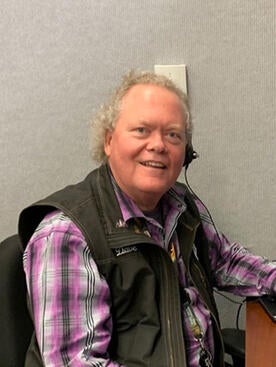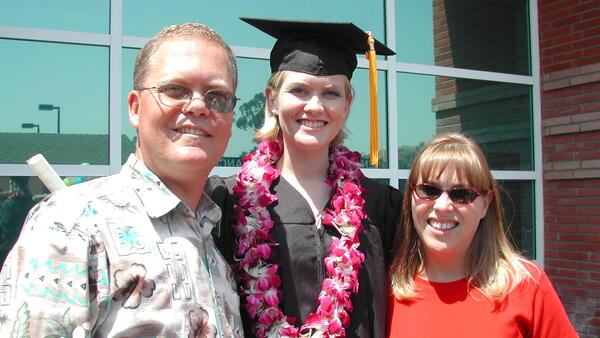ALUMNI PROFILE
The Rocket Scientist
Studying physics and computer science at UCR helped launch David Lick’s career as an aerospace engineer
By Sarah Nightingale
D avid Lick stared down at the midterm test in front of him. He read the question. Then he read it again. A subconscious eyeroll marked the transition from pre-exam jitters to another feeling: irritation. “The question asked me to prove the existence of the number one,” said Lick, then a sophomore in mathematics at UCR. “I thought to myself, ‘I don’t need to prove that the number one exists, I just need to know how to use it.’”
Lick’s rationale for applying to UCR’s mathematics program was solid: As a high school student growing up in nearby Victorville, he liked the subject — and he was good at it. But two years into a program that focused on pure math, he realized theoretical musings and “math for the sake of math” wasn’t the right fit.
Lick switched majors, opting for physics, and discovered programming classes in what would become UCR’s computer science department soon after. The change paved the way for an engineering career that has culminated in Lick’s contributions to the NASA Artemis missions to put humanity back on the moon.

“A lot of people graduate from college and don’t get the chance to apply what they learned,” he said. “I never had that problem — I’ve been in engineering my whole career and I feel very fortunate to be able to say that.”
At UCR, newlywed Lick lived on campus in married student housing and worked 30 hours a week in a work-study job at the Statewide Air Pollution Research Center. With the first of three children on the way, he didn’t have much time to party, and campus life revolved around his wife, Leslie, and family.
After graduating from UCR in 1981, Lick was hired by Rockwell-Autonetics, an Anaheim-based company that eventually became part of Boeing. His work developing simulation software for missiles turned into a management position leading the command and control communications department. As is often the case, Lick’s career took a few twists and turns — including “fun and interesting” work on HF radios used in military helicopters and the development of integration systems for the digital signage used on LA’s freeways. He eventually circled back to the aerospace industry.
“In 2008, I had an opportunity to change fields, so I looked back at everywhere I’d worked and realized rocket science was my favorite,” Lick said. “I was hired by Boeing and that’s what I’ve been doing ever since.”
For the past 15 years, Lick has been working on a Boeing contract with NASA to help launch the Artemis missions that will return Americans to the moon for scientific discovery and to explore the potential of a lunar economy. Artemis 1, an uncrewed test flight that circled the moon, was completed in December 2022. Coming up next are 2024’s Artemis 2, a crewed flight that will take humans beyond the moon and the furthest they’ve ever been in space, and 2025’s Artemis 3, which will land the first female and first person of color on the moon to complete a week of scientific studies on the lunar surface.
For Artemis 1, Lick’s job was to develop the navigation system for the Space Launch System, or SLS, rocket that sends the Orion spacecraft into orbit. The navigation system is an essential component of the SLS, ensuring that Orion sets out on target. Lick spent more than a decade designing the hardware — think super high-precision versions of sensors like accelerometers and gyroscopes that give us speed and direction data on our smartphones — as well as the corresponding software. The design work was capped with a year of simulated launches, and several more months of “could-be-maybe-soon” launch dates that were halted while any remaining technical kinks were ironed out. The rocket was successfully launched from Kennedy Space Center on Nov. 16, 2022, and returned to Earth about a month later.

“On the day of the launch, I was expecting a delay because there was always something to troubleshoot,” Lick said. “And then on that day, nothing was wrong and everything was working. That felt very weird.”
From NASA’s Launch Control Center — about three miles from the launch site — Lick nervously monitored the instrumentation as it reported the rocket’s liftoff. Then he saw the video feed. Then the walls shook, and the ground rumbled underfoot. For Lick, who is now working on the Artemis 2 navigation system but plans to retire later this year, this was the pinnacle of his career.
“In 1969, as a 9-year-old in Homestead, Florida, I watched on television as the first man walked on the moon. I was enamored,” Lick said. “It’s hard to imagine anything more exciting than human space flight. I am so fortunate to work in this field. It’s a joy.”
Return to UCR Magazine: Spring 2023